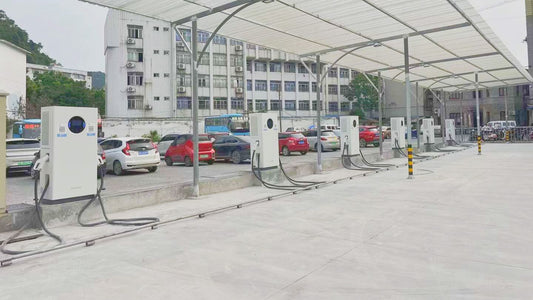As the popularity of electric vehicles (EVs) continues to rise, the need for accessible and efficient charging infrastructure becomes paramount. Installing an EV charger at home or in public spaces requires careful consideration of various factors to ensure safety, compatibility, and optimal functionality.
In this article, we will explore the requirements for installing an EV charger, focusing on the essential aspects to consider for a successful installation.
Determine the Type of EV Charger
Before delving into the installation process, it is crucial to determine the type of EV charger that suits your needs. There are three main types of chargers: Level 1, Level 2, and DC fast chargers. Level 1 chargers use a standard 120-volt household outlet and provide a slow charging rate. Level 2 chargers require a dedicated 240-volt circuit and offer faster charging. DC fast chargers are typically found in public spaces and provide rapid charging. Understanding the differences between these charger types will help you choose the most suitable one for your requirements.
Electrical System Assessment
Once you have selected the appropriate charger type, the next step is to assess your electrical system's capacity. Most Level 1 chargers can be plugged into existing outlets, but Level 2 chargers require dedicated circuits with higher voltage and amperage capacity. It is recommended to hire a qualified electrician to evaluate your electrical panel's capacity and determine if any upgrades or modifications are necessary to support the charger installation.
Permits and Regulations
Installing an EV charger often involves obtaining permits and complying with local regulations. Different jurisdictions may have specific rules regarding charger installations, including zoning requirements, electrical codes, and building permits. Contacting the local building department or relevant authorities can provide you with the necessary information and ensure compliance with all applicable regulations.
Charger Location
Determining the optimal location for your EV charger is crucial for convenience, safety, and efficient charging. For home installations, consider factors such as proximity to the electrical panel, parking space availability, and the charger's accessibility. In public spaces, charger location should accommodate easy access, parking convenience, and potential future expansion. It is important to ensure the charger's placement adheres to any local building codes and accessibility guidelines.
Electrical Infrastructure Upgrades
Depending on the electrical system's capacity assessment, you may need to upgrade your infrastructure to support the EV charger installation. This could involve adding a new electrical circuit, increasing the electrical panel's capacity, or installing a subpanel. Such upgrades require the expertise of a licensed electrician to ensure proper installation, load balancing, and compliance with safety standards.
Wiring and Grounding
Proper wiring and grounding are crucial to ensure the safe and efficient operation of an EV charger. The charger's manufacturer will provide specific instructions regarding wiring requirements, cable size, and connection methods. It is essential to follow these guidelines precisely to avoid electrical hazards and maximize charging performance. Grounding the charger according to local electrical codes and standards is also essential for safety.
Safety Considerations
Safety is of paramount importance when installing an EV charger. The charger should be equipped with safety features such as ground fault circuit interrupters (GFCIs) and overcurrent protection. Adequate ventilation and weatherproofing are essential, especially for outdoor installations. It is advisable to hire a professional electrician experienced in EV charger installations to ensure all safety measures are properly implemented.
Network Connectivity and Smart Features
Some EV chargers offer network connectivity and smart features that enable remote monitoring, data tracking, and integration with smart home systems. If you are interested in these advanced features, ensure your chosen charger is compatible with your home network and provides the desired functionalities. Additionally, consider the availability of smartphone apps or web portals provided by the charger manufacturer for convenient charging management.
Conclusion
Installing an EV charger requires careful planning and adherence to specific requirements. By considering the charger type, assessing electrical system capacity, obtaining necessary permits, choosing an optimal location, upgrading infrastructure if required, ensuring proper wiring and grounding, prioritizing safety, and considering advanced features, you can successfully install an EV charger that meets your needs. Embracing this sustainable technology contributes to the growth of electric vehicle adoption and reduces our carbon footprint for a greener future.




